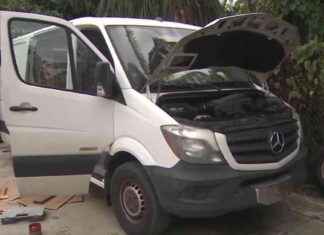The creation of the supervillas in Barcelona has improved the urban space, but it is beginning to have a devastating effect on the real estate market that will change the profile of the neighborhood’s residents and drastically accelerate gentrification: the departure of regular residents in favor of people with high income levels and who will live in the city temporarily, as confirmed by a study carried out by the CBRE consultancy.
The firm points out that in the new superblocks, and especially in the one on Carrer Consell de Cent, which is already open, the real estate market has soared: rental incomes have doubled in the last 18 months, so that the rent the average price on Carrer Consell de Cent already exceeds 3,000 euros per month, and the number of flats rented per season (with contracts of less than a year) has tripled.
According to Xavier Güell, director of the consultancy in Barcelona, ??”it is clear that the city of the future must give more space to pedestrians, have more green areas and less traffic, and that these changes can generate resistance. But the execution of this vision, in Barcelona, ??has been done in a way that could be improved, among other things because it requires making available to citizens alternative means of public transport that do not exist today”.
The consultancy has studied the evolution of the real estate market in the superblocks of Consell de Cent, Borrell, Rocafort and Girona streets and has compared it with the adjacent streets, in the section located in the Eixample district. “We started to notice the effects on the real estate market from August 2022, when the works were already advanced and it was clear that the project would become a reality,” Güell points out.
In general, the CBRE study shows that rental incomes in the superblock areas have grown at a rate that is three times that of the adjacent streets. While prices were similar in February 2022, last month renting a flat in the supervillas cost an average of 2,632 euros per month, 65% more than eighteen months earlier. The rent per square meter has practically doubled (up 87%, to 32.8 euros/m2/month), so that tenants pay an additional 11 euros per month for each square meter compared to flats located in nearby streets .
The increase is even greater in Carrer Consell de Cent, the most emblematic of the new urbanism, where renting a flat now costs an average of 3,107 euros per month, 78% more than what was paid 18 months ago and almost 1,100 euros more than the rent paid for an apartment in the neighboring street of Valencia. In the last eighteen months, rents have skyrocketed all over Barcelona, ??but particularly in Carrer Consell de Cent, with a 110% increase compared to February 2022.
The rental market in the area of ??the super islands is not only becoming more expensive, but also shrinking. “There are more owners who choose to rent their flats for the season, perhaps to avoid being affected by the new housing law”, points out Güell. So, on Calle Consell de Cent, 50 homes were sold in this type of short-term rental in May, two and a half times more than in February 2022, while on the neighboring Calle de València there are only 3 more flats of this type of lease than the previous period.
Güell emphasizes that the superilla has also given more vitality to the buying and selling market, although at the moment it has not had an excessive effect on prices. Therefore, the flats for sale on Carrer Consell de Cent have increased by 26%, while on Carrer València they have fallen by 26%, in line with the cooling that the real estate market is suffering in Spain due to the rise in interest rates. Sales prices have also evolved in a disparate way, and in superblocks they have risen by 4%, while they have fallen in adjacent streets, up to 18% in some cases. “We don’t really know why this drop is due”, admits Güell, which could be because worse flats are now being sold than in the previous period, or perhaps because the traffic problems make these streets, in contrast to the “pacified” ones perceived as less attractive streets by potential buyers. Now a flat on Carrer Consell de Cent costs on average 3,389 euros/m2, 28% more than on Carrer València.
Olga Beltrán, associate director of CBRE Barcelona’s residential department, recalls that it is not the first time that an urban transformation has had a major impact on the real estate market of an area, as happened with the coverage of sections of the Ronda de Dalt o from the round of the Mid. “The trend in cities is going in that direction, and people really appreciate that mayors take this type of initiative,” he recalls.
The changes in the real estate market in the super-blocks, Güell points out, are not due to the presence of funds or institutional investors. “Some buildings have a single owner, but it’s not common,” he recalls. In addition, the uncertainties introduced by the Housing law have made investors less eager to buy to rent. “There is only interest in seasonal rentals, for short periods, and in general promoters return to the model that was the majority until a few years ago of promoting to sell buildings floor by floor”.
“If the legislation on housing changes after this electoral cycle, it is possible that foreign investors will return”, he points out. In his opinion, funds and insurance companies want to own rental housing buildings, even if they bring them low returns, around 4%, “because they are very stable investments: it is very difficult for them to leave the building empty. There is a lot of demand from people who want to rent a flat in Barcelona, ??and if the law changes, there will be no shortage of investors”.








